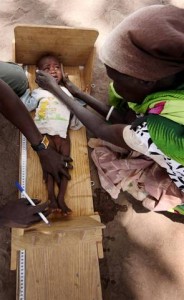聯合國《千禧發展目標》報告2011揭示:最脆弱的兒童仍然備受忽略
2011-07-07

| 纽约/日内瓦/香港,2011年7月7日——联合国今天发表《千禧发展目标》报告2011,赞扬各方已朝着目标迈进了一大步。报告亦指出,要各项目标同时取得成功,先决条件是必须所有儿童,不论性別、种族、地理位置和家庭收入,同样受惠于目标进程。然而,目前世界上最贫困的儿童仍然备受外界忽略,因此要在2015年底前达成所有目标,仍然存在困难。
2009年的5岁儿童死亡数目,已由1990年的1,240万逐步下降至810万,不过,生活在最贫困环境的儿童,在改善营养及生存方面的进展依然是大幅落后的。在2009年,在发展中国家,有接近1/4的儿童出现体重过轻的问题,其中最贫困儿童的情况是最为严峻的,他们的死亡风险相较来自发展中国家其他富裕家庭的儿童,足以高出2倍。而在推动教育方面,报告指出,部份最贫困的国家已见取得重大进展,以蒲隆地、马达加斯加、卢旺达、萨摩亚、圣多美与普林希比共和国、多哥和坦桑尼亚等地为例,纷纷都已成功或接近达到基础教育普及化。不过,儿童能否成功入学,始终多取决于他们的自身状况。一般而言,家境贫困、女性或居住在受冲突影响地区的儿童,会较大机会失学。根据报告数字,现时全球有2800万名年届小学适龄的儿童,仍未入学,约佔总适龄儿童数目42%,而他们都是生活在饱受冲突困扰的贫困国家的。
此外,在1990年至2008年间,全球估计有达11亿居住在城镇的人口和7亿2,300万居住在偏远地区的人口能享用净化过的食水,可见行动亦已取得一大进展。只是报告亦透露,各地的发展进度其实並不一致,各国甚至在国内的不同地区,发展速度仍都差距悬殊。要促进全球均衡发展,势必加倍努力。
|


报告同时指出,先进衞生设备往往与穷乡僻壤擦身而过,即使一地的整体生活水平获得改善,贫苦的一群大多未能分享进展成果,例如,1995年至2008年期间,在南亚地区最贫困的4成人口中,提升衞生设施的覆盖率几乎毫无突破。而现时逾26亿活在最贫穷地区的人口仍然缺乏厕所或其他较先进的衞生设施。
联合国于2000年9月召开的千禧年高峰会,首度通过8大国际性的《千禧发展目标》,以期在2015年底前消灭贫穷饥饿、改善健康及教育状况、促进两性平等,及确保可持续环境等。









